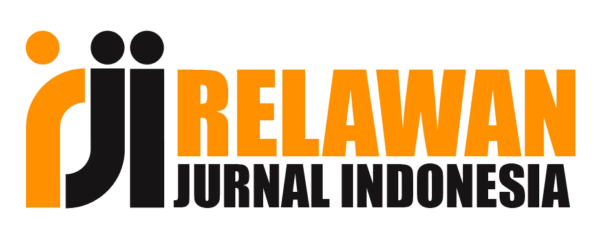PENGEMBANGAN ELECTRICITY CONCEPT TEST BERFORMAT FOUR-TIER TEST
Abstract
ABSTRAK
Penelitian ini bertujuan untuk mengembangkan Electricity Concept Test (ECT) berformat four-tier test sebagai sebuah alat tes yang mampu mengungkap miskonsepsi peserta didik pada materi listrik statis. Instrumen dikembangkan dari instrumen ECT oleh Esra Bilal dan Mustofa Erol berupa two-tier open ended question, dengan langkah-langkah sebagai berikut: adaptasi kurikulum, adaptasi bahasa, menentukan option jawaban, uji coba dan evaluasi. Uji coba dilakukan terhadap siswa SMA di kabupaten Bandung Barat. Hasil uji coba menunjukkan instrumen yang dikembangkan mampu mengungkap peserta didik yang miskonsepsi, tidak menguasai konsep, menguasai konsep sebagian dan menguasai konsep. Analisis lebih lanjut dari hasil uji coba merekomendasikan perlu perbaikan berupa: perbaikan Bahasa serta distraktor agar dapat ditindaklanjuti untuk uji coba lebih luas.
Kata kunci: listrik statis; ECT; miskonsepsi; four-tier test
ABSTRACT
This research aimed to develop the Electricity Concept Test (ECT) four-tier test formatted as a diagnostic test which can revealed student’s misconception at electrostatic. The instrument was developed from the ECT instrument by Esra Bilal and Mustafa Erol in the form of a two-tier open ended question, with the following steps: curriculum adaptation, language adaptation, choice of options, trials, and evaluation. The isntrument has been tested on high school students in the regency of West Bandung. The results of the test showed that the developed instrument is able to showed the students who misconception, do not understand the concept, partially understand and understand the concept. Further analysis of the trial results recommends improvements in the form of: Language improvement and the distractors to be followed up for a wider trial.
Keywords: electrostatic; ECT; misconception; four-tier test
Full Text:
PDF (Bahasa Indonesia)References
Ozkan, G dan Selcuk, G. S. (2015). The Effectiveness of Conceptual Change Texts and Context-Based Learning on Students’ Conceptual Achievement. Journal of Baltic Science Education, Vol. 14, No. 6, 753-763.
Tastan, I., Dikmenli, M., dan Cardak, O. (2007). Effectiveness of Conceptual Change Texts Accompanied by Concepts Maps About Students’ Understanding of The Molecules Carrying Genetical Information. Asia-Pacific Forum on Science Learning and Teaching, Vol. 9, Issue 1, artikel 11, 1-13.
Gurel, D. K., Eryilmaz, A., dan McDermott, L. C. (2015). A Review and Comparison of Diagnostic Instruments to Identify Students’ Misconception in Science. Eurasia Journal of Mathematics, Science & Technology Education, 11(5), 989-1008.
Caleon, I. S., dan Subramaniam, R. (2009). Do Students Know What They Know and What They Don’t Know? Using a Four-Tier Diagnostic Test to Assesss the Nature of Students’ Alternative Conceptions. Res Sci Educ, 40, 313-337.
Zulfikar, A., Samsudin, A., dan Saepuzaman, D. (2017). Pengembangan Terbatas Tes Diagnostik Force Concept Inventory Berformat Four-Tier Test. Jurnal Wahana Pendidikan Fisika, Vol. 2, No. 1, 43-49.
Chu, H.E., Treagust, D. F., & Chandrasegaran, A. L. (2009). A Stratified Study of Students’ Understanding of Basic Optics Concepts in Different Contexts Using a Two-Tier Multiple-choice Items. Research in Science & Technological Education, 27(3), 253-265.
Ismail, I.I., Samsudin, A., Suhendi, E., Kaniawati, I. (2015). Diagnostik Miskonsepsi Melalui Listrik Dinamis Four Tier Test. In Prosiding Simposium Nasional Inovasi dan Pembelajaran Sains 2015, 381-384.
Bilal, E dan Erol, M. (2009). Investigating Students’ Conceptions of Some Electricity Concepts. Lat. Am. J. Phys. Educ. Vol. 3, No.2, 193-201.
Zaleha, dkk. (2017). Pengembangan Instrumen Tes Diagnostik VCCI Bentuk Four-Tier Test pada Konsep Getaran. Jurnal Pendidikan Fisika dan Kelimuan (JPFK), 3, 36-42.
DOI: https://doi.org/10.17509/wapfi.v3i1.10943
Refbacks
- There are currently no refbacks.
Copyright (c) 2018 Wahana Pendidikan Fisika
The Journal Wahana Pendidikan Fisika http://ejournal.upi.edu/index.php/WapFi/ is licensed under a Creative Commons Attribution-ShareAlike 4.0 International License
The Journal WaPFi (Wahana Pendidikan Fisika).
All rights reserverd. pISSN 2338-1027 eISSN 2685-4414
Copyright © Faculty of Mathematics and Science Education (FPMIPA) Universitas Pendidikan Indonesia (UPI)










